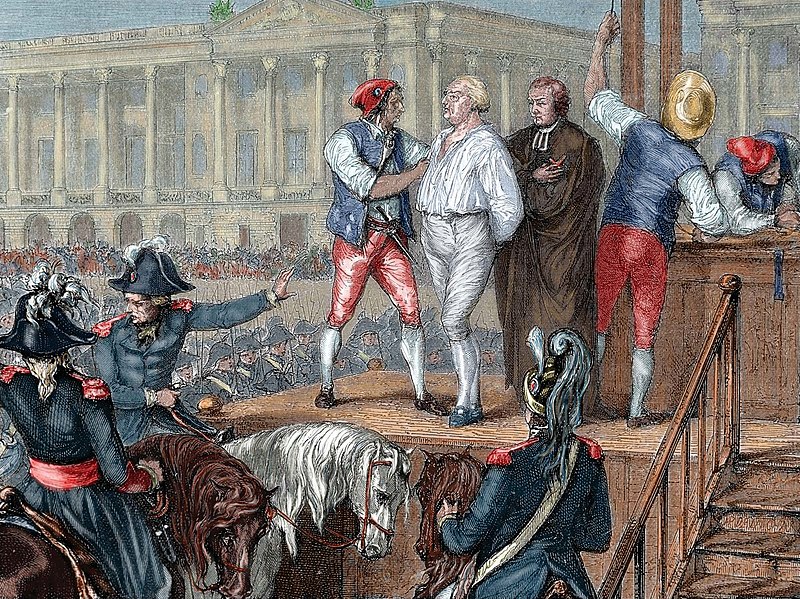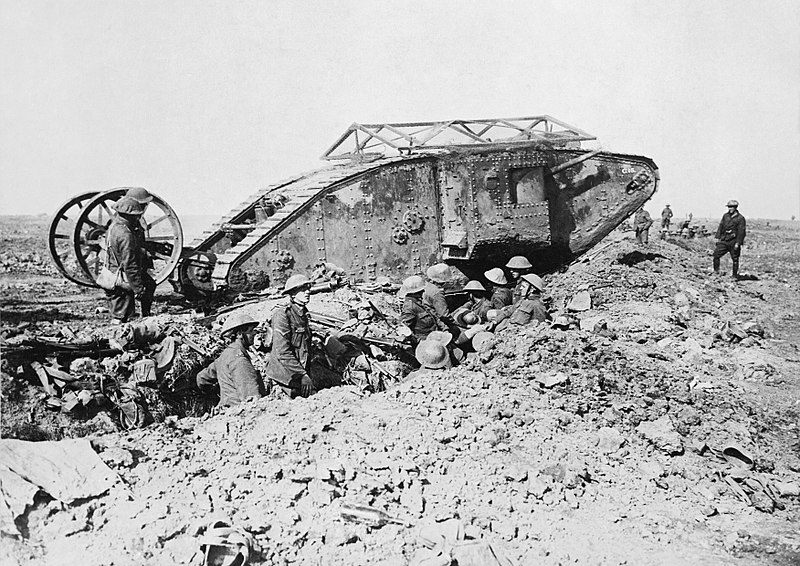This article provides a curated list of 20 significant historical events that occurred on January 23, arranged in chronological order. Each event has been expanded upon to give readers a deeper understanding of its historical context, significance, and impact.
From the deadliest earthquake in history in 1556, through the political machinations of the 18th and 19th centuries, to pivotal moments in the 20th century such as groundbreaking explorations, Cold War incidents, and milestones in cultural recognition, this list spans a wide array of subjects including natural disasters, political upheaval, scientific achievements, and cultural landmarks.
These events not only shaped the course of history but also reflect the diverse nature of human experience over the centuries.
January 23rd Events in History
1556 – The deadliest earthquake in history, the Shaanxi earthquake, strikes Shaanxi province, China. Approximately 830,000 people are killed
The Shaanxi earthquake, occurring on January 23, 1556, in the Shaanxi province of China, is the deadliest earthquake in recorded history. It is estimated to have killed approximately 830,000 people.
Also Read: January 22 – On this Day in History
The massive quake struck in the late evening and affected more than 97 counties in the provinces of Shaanxi, Shanxi, Henan, Gansu, Hebei, Shandong, Hubei, Hunan, Jiangsu, and Anhui. The epicenter was in the Wei River Valley, near the cities of Huaxian, Weinan, and Huayin.
In some counties, as much as 60% of the population was killed. The earthquake caused widespread geological impact, including landslides, ground fissures, and even redirected rivers, which led to further flooding and disaster in the aftermath.
1570 – James Stewart, 1st Earl of Moray, regent for the infant King James VI of Scotland, is assassinated by firearm, the first recorded instance of regicide by gunshot
James Stewart, the 1st Earl of Moray, was a leading Scottish nobleman and the illegitimate son of King James V of Scotland.
He was an influential figure during the Scottish Reformation and served as the regent for his half-nephew, the infant King James VI of Scotland, after the abdication of the latter’s mother, Mary, Queen of Scots. Stewart’s tenure as regent was marked by efforts to strengthen the newly established Protestant Church of Scotland and to govern the country amidst a period of political turmoil.
Also Read: January 24th Events in History
On January 23, 1570, Stewart was assassinated in Linlithgow by James Hamilton of Bothwellhaugh using a firearm, marking the first recorded assassination in history using a gun. This event underscored the intense factionalism and violence of Scottish politics at the time.

1579 – The Union of Utrecht forms a Protestant republic in the Netherlands
The Union of Utrecht, signed on January 23, 1579, was a crucial alliance between the northern provinces of the Netherlands, which declared their independence from Spanish rule.
This treaty was a response to the oppressive and tyrannical rule of Philip II of Spain and was a significant step in the Dutch Revolt, leading to the establishment of the Republic of the Seven United Netherlands.
The Union of Utrecht is considered the foundation of the modern Netherlands, establishing a confederation that would remain independent of foreign control. It laid down the religious freedoms and civil liberties that would become hallmarks of Dutch society.
1656 – Blaise Pascal publishes the first of his Lettres provinciales
On January 23, 1656, Blaise Pascal, the French mathematician, physicist, inventor, philosopher, and writer, published the first of his eighteen Lettres provinciales.
These letters were written in defense of his friend Antoine Arnauld, an opponent of the Jesuits and a defender of Jansenism, who was on trial for heresy before the faculty of theology in Paris. The Lettres provinciales criticized the moral theology of the Jesuits and was influential in promoting a return to the Augustinian doctrine of grace.
Written in the vernacular French rather than Latin, the letters were widely read and played a significant role in the religious controversy between Jansenists and Jesuits. They are also noted for their contribution to French prose.
1789 – Georgetown University, the first Catholic university in the United States, is founded in Georgetown, Maryland (now part of Washington, D.C.)
Georgetown University was founded on January 23, 1789, making it the oldest Catholic and Jesuit institution of higher education in the United States. Its establishment was spearheaded by John Carroll, the first Catholic bishop in the United States, with the college initially located in Georgetown, Maryland, now part of Washington, D.C.
The university was chartered by an act of Congress in 1815 and has since grown to become a major global research university. Georgetown’s founding reflects the growth of Catholic education in the United States in the post-Revolutionary War era, aiming to educate citizens in a country newly committed to separation of church and state.
1793 – Second Partition of Poland: Russia and Prussia partition Poland for the second time
The Second Partition of Poland occurred on January 23, 1793, a pivotal moment in the dismemberment of the Polish-Lithuanian Commonwealth among its neighbors.
This partition was orchestrated by the Kingdom of Prussia and the Russian Empire, following the First Partition in 1772. Under this partition, Russia acquired a significant portion of Poland’s eastern territories, including regions that are now part of Belarus and Ukraine, while Prussia annexed lands in the west, including the important cities of Danzig (Gdańsk) and Thorn (Toruń).
The Second Partition greatly reduced the size of Poland, leading to the Kościuszko Uprising in 1794 and eventually to the Third Partition in 1795, which resulted in the complete disappearance of Poland as an independent state for over 123 years.
1795 – After being convicted of treason by the French Convention, Louis XVI of France is executed by guillotine
On January 21, 1793, not 1795 as might have been mistakenly noted, Louis XVI of France was executed by guillotine, marking a pivotal moment in the French Revolution. As King of France, Louis XVI faced immense financial crises and widespread discontent among his subjects, leading to his loss of authority and the rise of revolutionary fervor.
His attempted flight from France in 1791 further eroded his support. Captured and returned to Paris, he was eventually put on trial by the National Convention, found guilty of conspiracy and high treason, and sentenced to death.
His execution symbolized the downfall of the monarchy and the ascendance of the Republic, setting the stage for the radical phase of the Revolution and the subsequent Reign of Terror.

1849 – Elizabeth Blackwell is awarded her M.D. by the Geneva Medical College of Geneva, New York, becoming the United States’ first female doctor
Elizabeth Blackwell became the first woman to receive a medical degree in the United States on January 23, 1849, graduating from Geneva Medical College in New York. Her journey to becoming a doctor was fraught with challenges, as she faced significant opposition and prejudice from both the male-dominated medical establishment and society at large.
Blackwell’s admission to medical school was initially considered a practical joke by the faculty, who allowed her entry only after the male students voted in favor, believing it to be a prank.
Nevertheless, she persevered, excelling in her studies and going on to a distinguished career in medicine. Blackwell’s achievement was a significant milestone in the struggle for women’s rights and the acceptance of women in the medical profession.
1855 – The first bridge over the Mississippi River opens in what is now Minneapolis, Minnesota, a crossing made today by the Hennepin Avenue Bridge
The first bridge to span the Mississippi River opened in 1855, connecting the cities of Minneapolis and Saint Anthony, Minnesota (the latter now part of Minneapolis). This bridge, known as the Hennepin Avenue Bridge, was a major engineering achievement of its time and played a critical role in facilitating transportation and commerce across the river.
Its construction helped to stimulate economic development in the region, making Minneapolis a major grain milling and timber processing center in the United States. The original bridge has since been replaced, but subsequent bridges at this location have continued to bear the name Hennepin Avenue Bridge.
1870 – In Montana, U.S. cavalrymen kill 173 Native Americans, mostly women and children, in what becomes known as the Marias Massacre
The Marias Massacre occurred on January 23, 1870, near the Marias River in Montana. U.S. Army soldiers, led by Major Eugene M. Baker, attacked a camp of Piegan Blackfeet Indians, most of whom were women, children, and elderly men.
The attack resulted in the death of around 173 Native Americans, although estimates vary. The massacre was part of the Indian Wars in the American West, a series of conflicts between the United States and various indigenous peoples following European American settlement.
The Marias Massacre has been cited as one of the most brutal incidents in the history of the United States’ warfare against Native Americans, reflecting the broader patterns of violence, dispossession, and displacement that characterized the westward expansion of the United States.
1904 – The Ålesund Fire levels most of the town of Ålesund, Norway, building the way for its unique concentration of Art Nouveau architecture
The Ålesund Fire occurred on January 23, 1904, in the Norwegian town of Ålesund. It was one of the most catastrophic fires in Norwegian history, resulting in the near-total destruction of the town. Over 850 houses were destroyed, leaving more than 10,000 people homeless, in a town that had a population of approximately 12,000 at the time.
Remarkably, only one life was lost due to the disaster. The fire’s cause was attributed to a cow knocking over a lantern in a barn. The rebuilding of Ålesund was undertaken with assistance from Kaiser Wilhelm II of Germany, who had a personal affection for Norway.
The town was rebuilt in the Art Nouveau style, which was popular in Europe at the time. Today, Ålesund is renowned for its unique concentration of Art Nouveau architecture, making it a point of interest for both tourists and architects.

1920 – The Dutch refuse to surrender the exiled Kaiser Wilhelm II of Germany to the Allies
After World War I, the Allies demanded the extradition of Kaiser Wilhelm II of Germany, who had abdicated and fled to the Netherlands in 1918, seeking asylum.
On January 23, 1920, the Dutch government officially refused to surrender the former Kaiser to the Allies for prosecution as a war criminal, citing their tradition of asylum and the absence of a legal basis for extradition.
Wilhelm II had been held responsible by the Allies for the atrocities of the First World War. He spent the remainder of his life in exile in the Netherlands, where he died in 1941.
The Dutch refusal to extradite him was a significant moment in post-World War I diplomacy, illustrating the complexities of international law and the limitations of the Allied powers in enforcing the provisions of the Treaty of Versailles.
1937 – The trial of the anti-Soviet Trotskyist center sees seventeen mid-level Communists executed in Russia
On January 23, 1937, the Soviet Union began the trial of the so-called “Anti-Soviet Trotskyist Center,” part of Joseph Stalin’s Great Purge, which targeted alleged Trotskyists and other dissidents within the Communist Party.
The trial was one of a series known as the Moscow Trials, highly publicized events intended to legitimize Stalin’s regime and the purges that had intensified since the assassination of Sergey Kirov in 1934.
Seventeen defendants were accused of conspiring against the Soviet government, including notable figures such as Yuri Piatakov and Karl Radek. Most were convicted and received death sentences or long prison terms.
These trials were characterized by forced confessions, often obtained through torture, and were later widely condemned as show trials devoid of any real judicial process.
1943 – World War II: Australian and American forces finally defeat Japanese army units in Papua New Guinea
In January 1943, Australian and American forces achieved a significant victory over Japanese army units in Papua New Guinea, marking a turning point in the New Guinea campaign of World War II. This success was part of the larger Battle of Buna-Gona, which lasted from November 1942 to January 1943.
The battle was crucial for securing the southeastern beachheads of Papua New Guinea and marked the first major land victory against the Japanese in the Pacific theater. The victory at Buna-Gona demonstrated the effectiveness of Allied cooperation and provided a significant morale boost, contributing to the eventual rollback of Japanese advances in the Pacific.
1950 – The Knesset passes a resolution that states Jerusalem is the capital of Israel
On January 23, 1950, the Knesset, Israel’s parliament, passed a resolution declaring Jerusalem the capital of Israel, reaffirming the country’s connection to the ancient city despite international disputes over its status.
Following the end of the British Mandate for Palestine and the ensuing 1948 Arab-Israeli War, Israel declared independence, and Jerusalem was divided between Israeli forces in the west and Jordanian forces in the east. The Israeli declaration came despite United Nations proposals to internationalize the city and ongoing tensions in the region.
The status of Jerusalem remains a central issue in the Israeli-Palestinian conflict, with East Jerusalem, captured by Israel in the 1967 Six-Day War, being considered by Palestinians as the capital of a future Palestinian state.
1960 – The bathyscaphe USS Trieste breaks a depth record by descending to 10,911 meters (35,797 ft) in the Pacific Ocean
On January 23, 1960, the bathyscaphe USS Trieste made a record-breaking descent into the Mariana Trench, the deepest part of the world’s oceans, located in the western Pacific Ocean.
Piloted by Jacques Piccard, son of the vehicle’s designer Auguste Piccard, and Lieutenant Don Walsh of the United States Navy, the Trieste descended to a depth of approximately 10,911 meters (35,797 feet), reaching the ocean floor in the Challenger Deep.
This historic dive marked the first time humans had reached the deepest known point on Earth. The journey took several hours and was a testament to human ingenuity and courage, expanding our understanding of the deep ocean and demonstrating the possibilities for deep-sea exploration.
1968 – North Korea seizes the USS Pueblo, claiming the ship had violated their territorial waters while spying
On January 23, 1968, the USS Pueblo, an American naval intelligence vessel, was seized by North Korean forces, claiming it had violated their territorial waters while engaged in spying. The incident occurred near the North Korean coast, and the Pueblo’s capture significantly escalated tensions during the Cold War.
The 83 crew members were detained, and one was killed during the capture. The remaining crew were imprisoned and subjected to psychological and physical abuse before being released 11 months later, following extensive negotiations.
The Pueblo incident remains a contentious episode in U.S.-North Korean relations, with the ship itself still retained by North Korea as a museum exhibit.
1973 – President Richard Nixon announces that a peace accord has been reached in Vietnam
On January 23, 1973, President Richard Nixon announced that a peace accord had been reached in Vietnam, signaling the end of direct U.S. military involvement in the Vietnam War.
The Paris Peace Accords were signed by representatives of the United States, North Vietnam, South Vietnam, and the Viet Cong, laying out the terms for a ceasefire and the withdrawal of U.S. troops.
Despite the agreement, conflict continued in Vietnam until the fall of Saigon in 1975, which led to the reunification of Vietnam under Communist control. The end of U.S. involvement in Vietnam marked a significant moment in American history, reflecting a complex and divisive conflict that had profound effects on American society and foreign policy.
1986 – The Rock and Roll Hall of Fame inducts its first members: Little Richard, Chuck Berry, James Brown, Ray Charles, Fats Domino, Everly Brothers, Buddy Holly, Jerry Lee Lewis, and Elvis Presley
The first induction ceremony for the Rock and Roll Hall of Fame took place on January 23, 1986. The initial class of inductees included rock and roll pioneers who had significantly influenced the music and culture of the 20th century. Among them were Chuck Berry, James Brown, Ray Charles, Domino, the Everly Brothers, Buddy Holly, Jerry Lee Lewis, Little Richard, and Elvis Presley.
These artists were recognized for their groundbreaking contributions to the development of rock and roll, shaping the genre with their distinctive sounds, styles, and performances.
The establishment of the Rock and Roll Hall of Fame in Cleveland, Ohio, served to honor the legacy of these and other artists, and to preserve the history of one of America’s most influential cultural expressions.
2001 – The Chinese Communist Party stages a self-immolation in Tiananmen Square to frame Falun Gong and escalate the persecution
On January 23, 2001, a highly controversial and widely publicized incident occurred in Tiananmen Square, Beijing, where five individuals set themselves on fire. Chinese state media and authorities claimed that the act was carried out by followers of Falun Gong, a spiritual practice that had been banned in China since 1999.
Falun Gong representatives and international human rights organizations have disputed this characterization, suggesting that the incident was staged by the Chinese government to justify its crackdown on the movement and to sway public opinion against it.
The event has remained a point of contention, with differing accounts about the motivations and identities of those involved. It underscored the intense and often brutal campaign by the Chinese government to suppress Falun Gong and control religious practices within its borders.
